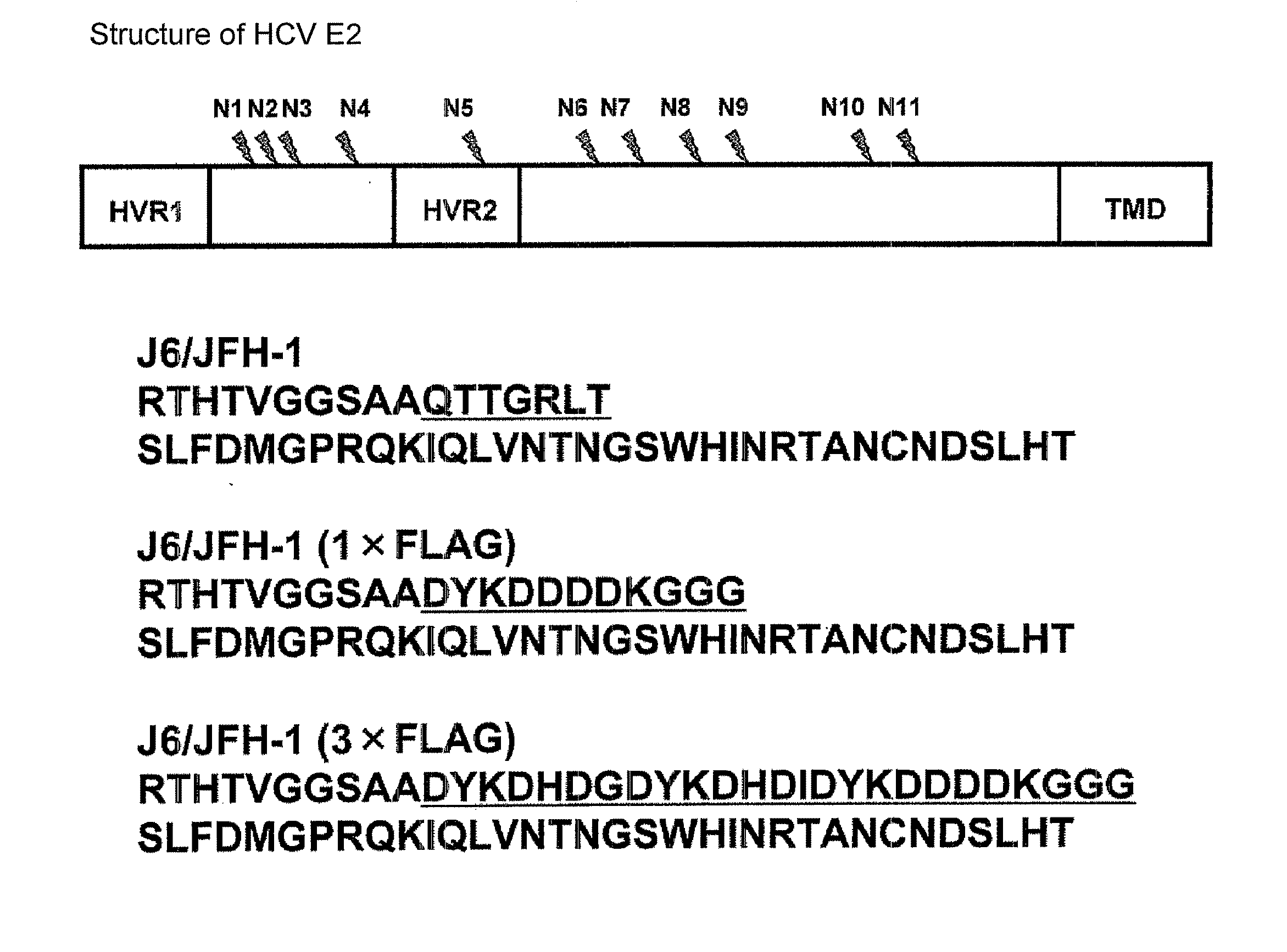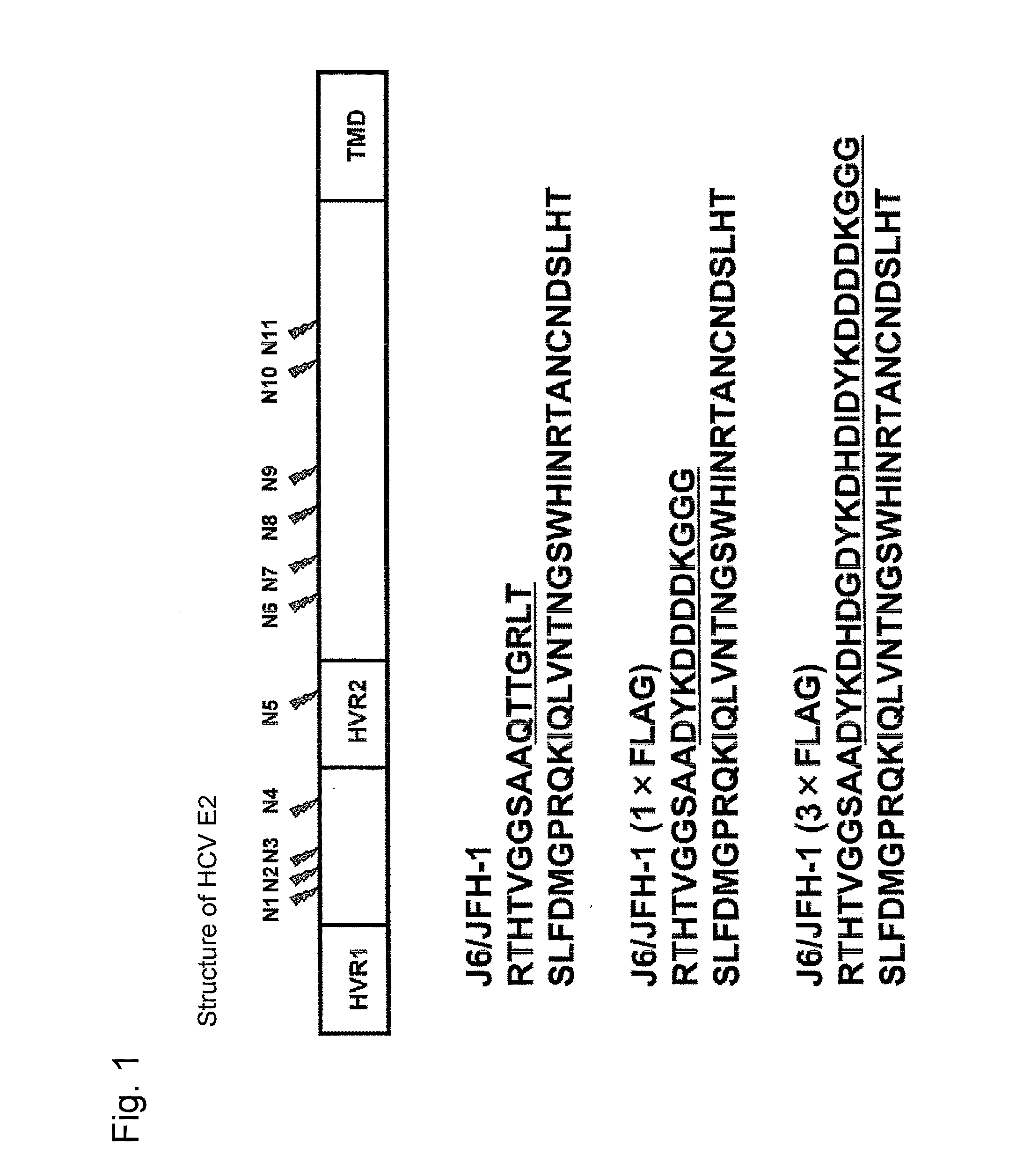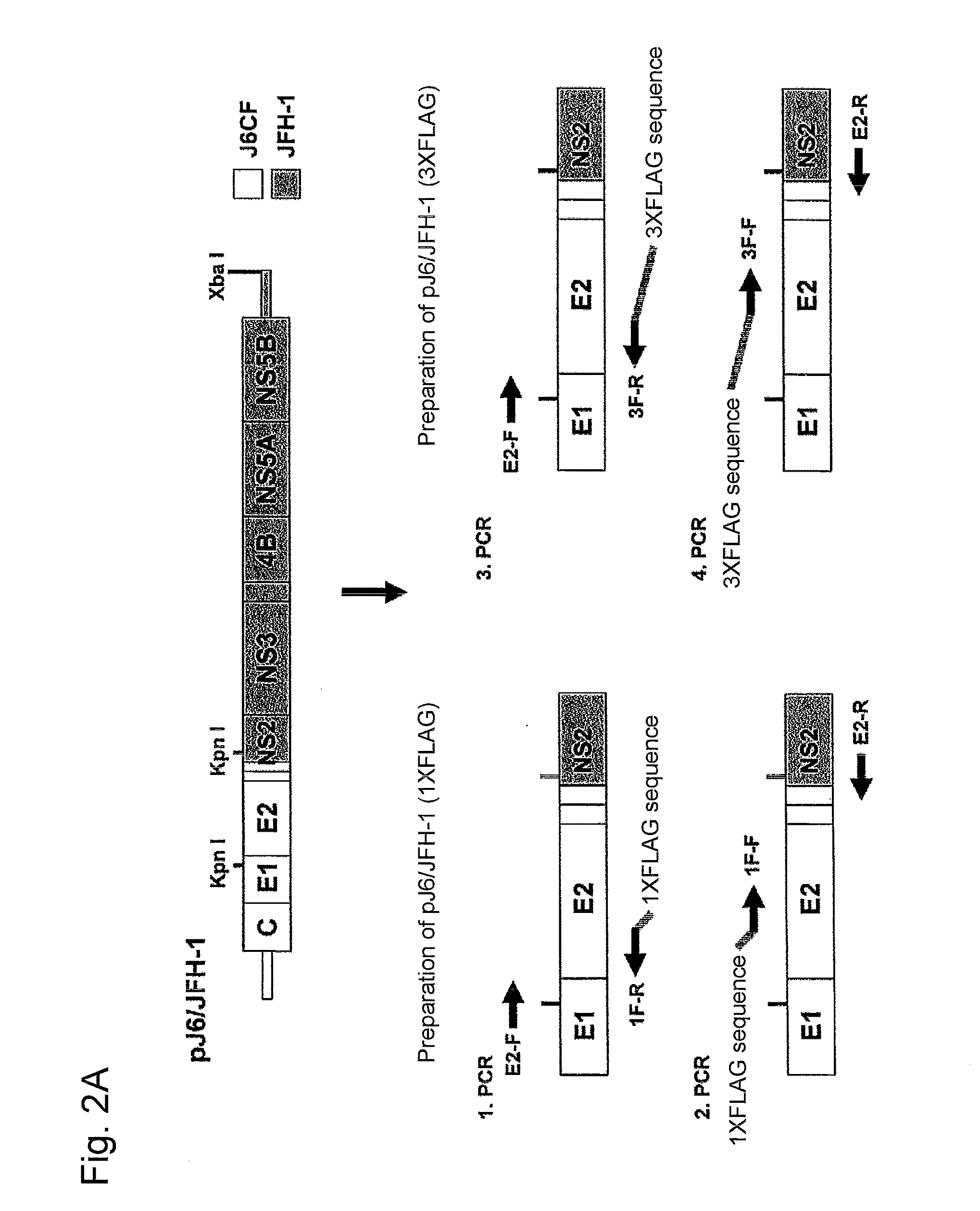Production and use of epitope-tagged hepatitis c virus particle
- Summary
- Abstract
- Description
- Claims
- Application Information
AI Technical Summary
Benefits of technology
Problems solved by technology
Method used
Image
Examples
example 1
Construction of J6 / JFH-1 Plasmid with FLAG-Tag Sequence Inserted in HCV E2 HVR1 Region
[0113]Used as a cDNA of HCV genomic RNA was the cDNA of a J6 / JFH-1 chimera comprising a genotype 2a strain J6CF-derived sequence from 5′-UTR to N-terminal 16th amino acid residue of NS2 (GenBank Accession No. AF177036, Yanagi, M. et al., Virology, 262, 1999, pp. 250-263) and a genotype 2a strain JFH-1-derived sequence from N-terminal 17th amino acid residue of NS2 to 3′-UTR (GenBank Accession No. AB047639, Kato, T. et al., Gastroenterology, 125, 2003, pp. 1808-1817). As the FLAG-tag, cDNA comprising 1 or 3 repeats of the FLAG sequence was inserted. The resulting plasmids are referred to as pJ6 / JFH-1 (1×FLAG) and pJ6 / JFH-1 (3×FLAG), respectively.
[0114]FIG. 1 shows the amino acid sequence which is in the vicinity of the FLAG tag-insertion site translated from those genes, starting from the N-terminal amino acid of the E2 protein. The N-terminal amino acid sequence of the E2 protein encoded by J6 / JFH1...
example 2
In Vitro RNA Synthesis and Introduction of RNA into Cells
[0125]The pJ6 / JFH-1, pJ6 / JFH-1 (1×FLAG), and pJ6 / JFH-1 (3×FLAG) were separately cleaved with XbaI and subjected to phenol / chloroform extraction then to ethanol precipitation. The cleaved plasmids each was used as a template to synthesize a HCV RNA using the MEGAscript T7 kit (Ambion).
[0126]The Huh7 cells (3×106 cells) and 5 μg of the HCV RNA were suspended in 400 μl of the Cytomix solution (120 mM KCl, 0.15 mM CaCl2, 10 mM K2HPO4 / KH2PO4, 25 mM Hepes, 2 mM EGTA, 5 mM MgCl2, 20 mM ATP, and 50 mM glutathione), transferred into a 4-mm cuvette, and subjected to electroporation using the Gene Pulser (BioRad) at 260 V and 950 μF. Thereafter, the cells into which the HCV RNA had been introduced were seeded on a 10 cm2 dish and then subcultured.
example 3
Production of HCV Particles Using J6 / JFH-1 (3×FLAG) RNA Introduced Cells
[0127]When the cells into which the J6 / JFH-1 or J6 / JFH-1 (3×FLAG) RNA had been introduced were subcultured, each HCV Core protein contained in the culture supernatant was quantified using the HCV antigen ELISA test kit (Ortho) to confirm the production of HCV particles. As a result, the amount of production of the HCV particles was found to remain unchanged at substantially constant levels when the J6 / JFH-1 RNA was introduced. When the J6 / JFH-1 (3×FLAG) RNA was introduced, however, the amount of HCV Core protein in the culture supernatant decreased with time until day 21 after the introduction, and then began to increase on day 22 after the introduction and reached an almost same level as that of J6 / JFH-1 on day 35 after the introduction (FIG. 3). This suggested that, although the J6 / JFH-1 (3×FLAG) RNA did not have a high capacity for virus production when the Huh7 cells were introduced, it had a capacity for vi...
PUM
| Property | Measurement | Unit |
|---|---|---|
| Molar density | aaaaa | aaaaa |
| Molar density | aaaaa | aaaaa |
| Molar density | aaaaa | aaaaa |
Abstract
Description
Claims
Application Information
 Login to View More
Login to View More - R&D
- Intellectual Property
- Life Sciences
- Materials
- Tech Scout
- Unparalleled Data Quality
- Higher Quality Content
- 60% Fewer Hallucinations
Browse by: Latest US Patents, China's latest patents, Technical Efficacy Thesaurus, Application Domain, Technology Topic, Popular Technical Reports.
© 2025 PatSnap. All rights reserved.Legal|Privacy policy|Modern Slavery Act Transparency Statement|Sitemap|About US| Contact US: help@patsnap.com



